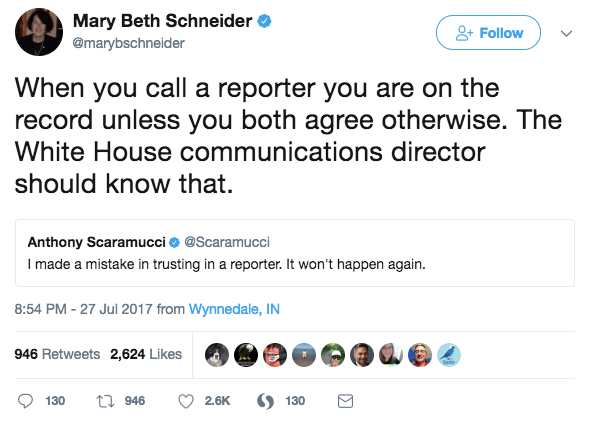
On the Record, Off the Record, On Background, and Not for Attribution – Explained
In 1989, The New York Times columnist William Safire expounded on the differences between “off the record,” “on background,” and “not for attribution,” or what he termed “the lexicon of quotability.” Yet, a decade later, five journalists from The Washington Post still couldn’t agree on common definitions for these terms.
Things still haven’t changed in 2016. Confusion over the rules of attribution in the media still abound. A quick Google search will produce a variety of similar, but at-times conflicting definitions from a variety of sources. (See Associated Press, NYU’s Journalism Handbook, Mr. Media Training, Ragan’s PR Daily, Wikipedia, Media Bistro, Mashable and Global Strategy Group.)
The lesson for communications professionals is clear: The differences between speaking off the record, on background, or not for attribution are what you and the reporter to whom you’re speaking collectively agree they are. In other words, before you say anything, make sure you and the reporter are on the same page about what these terms mean, as well as when they apply and when they do not. Otherwise you might find yourself repeating White House Communications Director Anthony Scaramucci’s devastating mistake.
How do you reach agreement with a reporter?
We’ve culled the most common definitions for the rules of attribution to provide a general framework for negotiating agreed-upon definitions with each reporter.
On-the-Record:
This means that everything in the conversation can be used and attributed to your source by name and job title. Unless you specify otherwise and explicitly gain the prior agreement of the reporter, as reporter Mary Beth Schneider makes clear, assume that everything you say is on-the-record.
You can’t say something interesting and then suddenly declare it on background, for example. If you wish to speak, but not on the record, you must receive the reporter’s agreement first. If the reporter doesn’t agree, you’re still on the record.
For example:

Not for Attribution:
The comments may be quoted directly, but the source may only be identified in general terms (e.g., “a government insider”). It’s up to you and the reporter to determine how precisely you will be identified. Keep in mind that even if you’re not specifically identified, it still may be obvious to the audience who the source was.
For example:

On Background:
Some say it is the same as not for attribution, others believe you can’t even quote it, just paraphrase the information in the story.
In any case, the information provided by a source can be used, but the source cannot be named directly.
Speaking not for attribution or on background can be helpful when you want to put pressure on a political target without potentially disrupting your working relationship with the target.
For example:

Off-the-Record:
The information provided is not for publication. However, the information you provide can be used without attribution to verify its veracity with another source.
Off-the-record conversations work best in one-on-one situations.
Before you employ any of these tactics, besides speaking on the record, always bear in mind that none of these agreements are legally binding. It’s an honor code built on the trust you and each individual reporter share.
Most reporters aren’t looking to burn a source, but you still may be unwillingly named or quoted.
Use judgment and caution when working with a reporter for the first time. And ultimately, never tell a reporter anything that you absolutely don’t want to see in a story. Just ask Scaramucci.
Still confused? Contact us to discuss the nuances of attribution in more detail.


